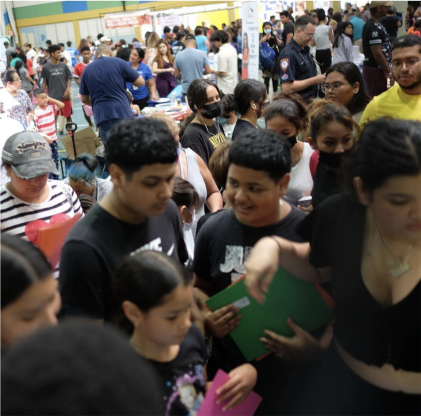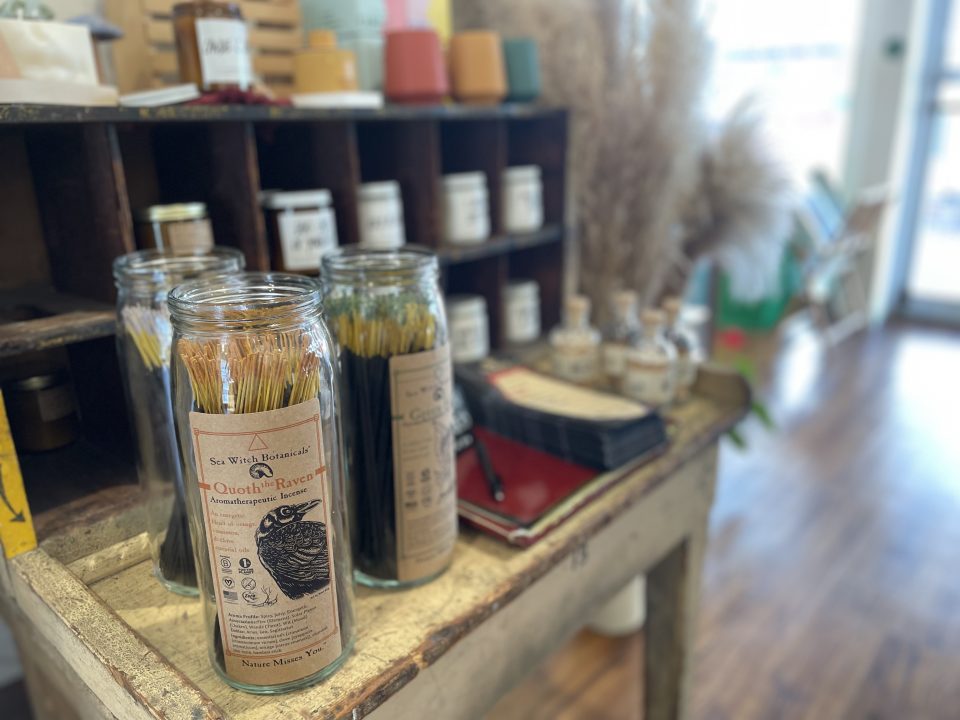
Close to 1,000 people gathered at La Espiguita Soccer Academy in Brentwood on Aug. 12 for the first ever Youth Day held by the District 1 Youth Advisory Board. The board, founded in April, is an independent coalition of local leaders promoting community building, advocacy and civic engagement.
Organizers raised over $2,400 for school supplies and distributed around 500 backpacks to families in need in the Brentwood community. Alongside fundraising efforts, they brought together 30 organizations including community outreach groups, prospective employers and the offices of local representatives.
Jorge Guadrón, councilman for District 1 of the Town of Islip, remarked on the event, “I’m really glad that I’m supporting these types of initiatives … because this is what we need in our community. We need the advancement of our youth.”
Town of Islip Supervisor Angie Carpenter was also in attendance, meeting with community leaders and congratulating the organizers.
The board formed after Guadrón’s 2021 election as councilman to represent Brentwood, North Bayshore and parts of Central Islip. He is the first minority seat elected to the town council in Islip’s history.
According to Joshua Chan, the chair of the Youth Advisory Board, the group “wanted to become an outlet for young people because growing up [in Brentwood] from K-12. It seemed like we didn’t really have anywhere to go to, with clubs there was never any action on the ground to organize people, to use their energy and pressure to put them somewhere.”

Throughout the event, Chan and other organizers were never still, as their conversations were frequently punctuated by hugs with members of the community and handshakes with local leaders. The Youth Day, proposed by Chan, is part of an international celebration endorsed by the United Nations to promote intergenerational solidarity as a key for sustainable development.
Ahmad Perez, who founded the board, said, “We see a future where students don’t have to worry about getting backpacks and school supplies for the upcoming school year … [Events like this] allow us to envision a future where Brentwood can really be leading on a lot of great work.”
According to Perez, Brentwood has a stigma of gang violence and is typically characterized by its underfunded school districts.
“But there are students who are doing incredible work — students who are off to Harvard or Yale doing incredible research in the medical fields and the science fields. And where are those stories?” Perez said.
A little over an hour into the event, an award ceremony was held to acknowledge the work of volunteers. Carpenter, Guadrón and other officials praised the board in the organization of the Youth Day, and the board recognized individuals of the community who were invaluable to its efforts.
The group’s work, however, extends beyond this event. Following its successful rally for a skatepark at Roberto Clemente Park, the Youth Advisory Board made plans to meet with the White House to discuss youth issues in their community. Perez stated that he and supervisors shared the sentiment that “You shouldn’t have to know someone to know someone to have access to the policy makers who are deciding your futures.”
He stressed the importance of prioritizing communities like Brentwood that are already overburdened. “We shouldn’t just be another checkbox on the list … we should be consulted, we should be worked with to ensure our voices are heard.”

The group’s first meeting was held virtually on July 27. Among other points, Chan raised the concern that “Our community members cannot worry about environmental justice if they have to pay bills the next day … They can’t take steps to live a dignified life without being in poverty.”
According to the New York State Education Department, Brentwood High School, from which both Chan and Perez graduated, serves a student population that is 85% Hispanic or Latino and 8% Black or African American. 91% of students are economically disadvantaged.
The last time the White House discussed Brentwood was in 2017 when President Trump visited to give a speech calling for the eradication of MS-13 following recent killings in the area. Perez and other members of the board argue that violent rhetoric has discouraged youth engagement and held back their community. Reflecting on the meeting, Perez said, “There’s a story that we want to tell that hasn’t been told before. There’s so much more behind those articles that you see … [which portray that] gang violence was literally all over the school district … [our hope is] that the story we tell overwrites the narrative that they originally had about us.”
Ivette Carbajal, a recent Brentwood High School graduate and incoming Stony Brook University freshman, recounted her experience visiting schools for softball games. “You always hear comments like ‘Oh, that’s Brentwood — they’re from the ghetto’ … and we talk to them and they try so hard to beat us down and call us different names.”
As a volunteer for the board, Carbajal hopes to get rid of that stigma because “it doesn’t belong here — it doesn’t belong anywhere.” She volunteers for the board and is determined to continue as she studies health sciences in the hopes of eventually becoming a pediatrician.

Sheilly Martinez-Jimenez, vice president of Stony Brook’s Latin American Student Association and Honduran-born activist and organizer, also spoke to the connection between Brentwood and Stony Brook. She has argued that the latter is wealthier, whiter and often unaware of the struggle in its neighboring community. She is also an intern, along with Chan, for the Youth Organizing Institute.
Martinez-Jimenez’s work advocating for understanding Latin culture in a majority white institution and community at Stony Brook mirrors her concerns for Brentwood. She notes that language barriers in majority Hispanic communities impair dialogue between representatives and their constituents.
“People forget that a lot of the Hispanic community in Long Island, in both Hempstead and Brentwood, their language isn’t English,” Martinez-Jimenez said. “If we don’t have representation of people speaking Spanish and being able to communicate with that community — especially when the Hispanic community is prominent in both areas — there’s no conversation happening.”
Chan says that Brentwood, as a community, is only growing, and he believes that it can be a hub for diversity and has momentum for change. Perez is confident that “if we capitalize on the potential of Brentwood, we can all come together and see that we can build this community to be something amazing.”





















